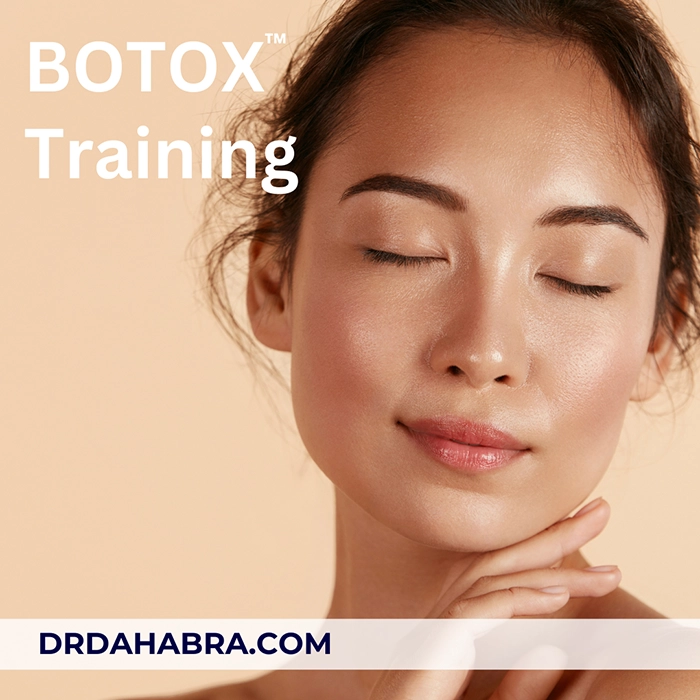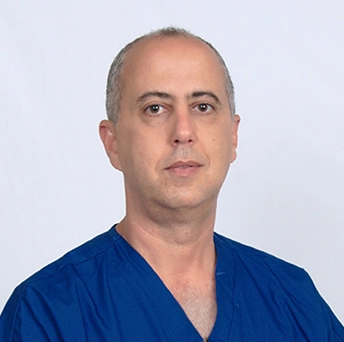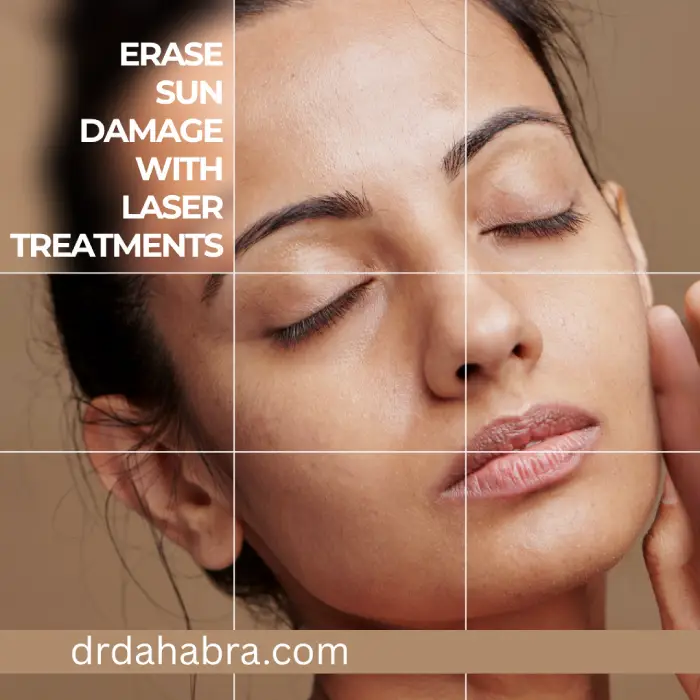Botox Training: A Comprehensive Guide for Healthcare Professionals
Introduction to Botox Training for Healthcare Professionals
Botox has revolutionized aesthetic medicine, offering non-surgical solutions for wrinkle reduction and facial rejuvenation. This article discusses Botox training for healthcare professionals.
Its popularity stems from its efficacy and minimal downtime, making it a sought-after procedure among patients seeking youthful appearances. For healthcare professionals, incorporating Botox into their practice can enhance service offerings and meet the growing demand for cosmetic treatments.
Understanding the fundamentals of Botox is crucial for practitioners aiming to deliver safe and effective treatments. This includes knowledge of facial anatomy, injection techniques, and patient selection criteria.
Comprehensive training ensures that professionals can provide high-quality care and achieve optimal patient outcomes.
As the aesthetic industry continues to expand, staying updated with the latest advancements and best practices in Botox administration is essential. Continuous education and hands-on experience are critical to maintaining proficiency and delivering exceptional patient care.
Table of Contents
1. Understanding Botulinum Toxin: Mechanism and Applications
2. Eligibility Criteria for Healthcare Professionals
3. Comprehensive Botox Training Programs: An Overview
4. Curriculum Components: Theory and Practical Sessions
5. Hands-On Training: Importance and Implementation
6. Safety Protocols and Managing Complications
7. Legal and Ethical Considerations in Botox Administration
8. Integrating Botox Services into Your Practice
9. Patient Assessment and Consultation Techniques
10. Post-Treatment Care and Patient Education
11. Continuing Education and Advanced Botox Techniques
12. Marketing Your Botox Services Effectively
13. Success Stories: Case Studies from Trained Professionals
14. Future Trends in Botox Training and Aesthetic Medicine
15. Frequently Asked Questions (FAQs)
16. Conclusion
17. Transform Your Career with the Best Aesthetic Medicine Training
18. References
1. Understanding Botulinum Toxin: Mechanism and Applications
Botulinum toxin, commonly known as Botox, is a neurotoxic protein produced by the bacterium Clostridium botulinum.
It temporarily paralyzes targeted muscles in controlled doses by inhibiting acetylcholine release at neuromuscular junctions. This action smooths dynamic wrinkles caused by muscle contractions, such as frown lines and crow’s feet.
Beyond cosmetic applications, Botox has therapeutic uses in treating conditions like chronic migraines, hyperhidrosis (excessive sweating), and muscle spasticity. Its versatility makes it a valuable tool in both aesthetic and medical practices.
Understanding its mechanism allows practitioners to tailor treatments to individual patient needs effectively.
Comprehensive training programs delve into the pharmacology of botulinum toxin, ensuring that healthcare professionals grasp its effects, duration of action, and potential side effects. This knowledge is fundamental in delivering safe and effective treatments.
2. Eligibility Criteria for Healthcare Professionals
Administering Botox requires specific qualifications, which vary by region and governing bodies.
Typically, licensed medical practitioners such as physicians (MDs, DOs), nurse practitioners (NPs), physician assistants (PAs), and dentists are eligible to perform Botox injections. However, regulations differ, and it’s imperative to consult local medical boards to understand the scope of practice.
In some areas, registered nurses (RNs) may administer Botox under the supervision of a licensed prescriber. Ensuring compliance with local laws and obtaining appropriate certifications is crucial to practice legally and ethically. Adhering to these guidelines protects both the practitioner and the patient.
Prospective injectors should seek accredited training programs that provide certification recognized by relevant authorities. This enhances credibility and ensures adherence to the highest standards of patient care.
3. Comprehensive Botox Training Programs: An Overview
Botox training programs equip healthcare professionals with the knowledge and skills for safe and effective administration.
These courses typically combine theoretical instruction with practical, hands-on experience. Participants learn about facial anatomy, injection techniques, patient assessment, and management of potential complications.
Accredited programs often offer Continuing Medical Education (CME) credits, contributing to professional development. Training may be delivered through workshops, seminars, or online modules, providing flexibility to accommodate varying schedules.
Selecting a reputable program with experienced instructors is essential for gaining comprehensive knowledge and practical skills.
Some programs also cover business aspects, such as integrating Botox services into existing practices and effective marketing strategies. This holistic approach prepares practitioners not only to perform procedures but also to build a successful aesthetic practice.
4. Curriculum Components: Theory and Practical Sessions
A robust Botox training curriculum encompasses both theoretical knowledge and practical application.
Theoretical components include understanding the pharmacology of botulinum toxin, facial anatomy, patient selection criteria, and contraindications. This foundational knowledge is crucial for making informed clinical decisions.
Practical sessions involve hands-on training where participants practice injection techniques on models or cadavers under expert supervision. This experiential learning builds confidence and hones technical skills.
Emphasis is placed on mastering various injection sites, depths, and dosages to achieve desired aesthetic outcomes.
Additionally, training programs often include modules on patient consultation, managing expectations, and post-treatment care. These aspects are vital for ensuring patient satisfaction and minimizing risks.
Comprehensive training prepares practitioners to deliver holistic care throughout the patient journey.
5. Hands-On Training: Importance and Implementation
Hands-on training is critical to Botox education, allowing practitioners to apply theoretical knowledge in real-world scenarios. Under the guidance of experienced instructors, participants practice injection techniques, learn to assess facial musculature, and develop an eye for aesthetic balance.
This practical experience is invaluable in building confidence and proficiency. Unlike purely theoretical courses, hands-on training enables practitioners to refine their motor skills and improve their injection accuracy.
It also helps them identify subtle variations in facial anatomy, ensuring customized and precise treatments.
Supervised sessions also allow participants to receive immediate feedback on their technique. Instructors can correct errors, provide tips for better results, and address questions in real time.
This interactive learning process bridges the gap between classroom instruction and clinical practice, creating a more competent practitioner.
Furthermore, hands-on training helps professionals manage patient interactions during procedures. From discussing treatment goals to addressing concerns, these sessions provide a simulated environment where healthcare providers can develop rapport-building and communication skills, enhancing overall patient satisfaction.
6. Safety Protocols and Managing Complications
Safety is a cornerstone of Botox administration, and training programs emphasize this aspect heavily.
Practitioners learn to adhere to strict hygiene and sterilization protocols to prevent infections and ensure patient well-being. Detailed knowledge of contraindications, such as pregnancy, allergies, or neurological disorders, is crucial to avoid adverse outcomes.
Additionally, comprehensive training covers potential complications like bruising, asymmetry, or ptosis (drooping eyelids).
Professionals are taught to recognize these issues early and implement corrective measures swiftly. For instance, injecting small amounts of hyaluronidase or massaging the area can resolve specific concerns, while others may require more advanced interventions.
Emergency preparedness is another critical component. Rare but severe reactions like anaphylaxis or vascular occlusion demand prompt action.
Practitioners learn to administer emergency medications and refer patients to specialists when necessary. By mastering safety protocols and complication management, healthcare professionals can instill confidence in their patients and maintain a high standard of care.
7. Legal and Ethical Considerations in Botox Administration
Legal and ethical compliance is essential for every Botox practitioner.
Training programs provide an overview of local regulations governing Botox administration, including licensure requirements, scope of practice, and supervision guidelines. Staying informed about these laws ensures practitioners operate within legal boundaries.
Ethical considerations, such as obtaining informed consent and maintaining patient confidentiality, are also emphasized. Practitioners are trained to openly discuss potential risks and outcomes, ensuring patients make well-informed treatment decisions.
Transparency and honesty are crucial to building trust and fostering long-term patient relationships.
Documentation is another critical aspect of ethical practice. Detailed records of patient history, treatment plans, and follow-up care aid in the continuity of care and provide legal protection in disputes.
By understanding the legal and ethical landscape, healthcare professionals can navigate the complexities of Botox administration responsibly.
8. Integrating Botox Services into Your Practice
Adding Botox services to an existing healthcare practice can significantly enhance its offerings and profitability.
Training programs often include business planning and operational integration modules to support this transition. Professionals learn to assess market demand, determine pricing strategies, and develop a service menu that appeals to their target audience.
One critical step is investing in the right equipment and creating a dedicated treatment space that meets regulatory standards. Proper marketing, including social media outreach and patient testimonials, can help promote new services effectively.
Additionally, leveraging referral networks within the healthcare community can attract a steady stream of patients.
Training also covers workflow optimization, from scheduling appointments to managing post-treatment follow-ups. These operational insights help practitioners deliver a seamless and professional experience, encouraging patient loyalty and word-of-mouth referrals.
9. Patient Assessment and Consultation Techniques
Effective patient consultations are the foundation of successful Botox treatments.
Training programs teach healthcare professionals to conduct thorough assessments to determine eligibility and establish realistic expectations. This includes analyzing facial anatomy, understanding patient goals, and identifying contraindications.
Open communication is vital during consultations. Practitioners are encouraged to ask detailed questions about the patient’s medical history, previous cosmetic procedures, and lifestyle habits.
Visual aids like before-and-after photos can help patients understand potential outcomes and set realistic expectations.
Equally important is addressing patient concerns and answering their questions honestly. By fostering a collaborative relationship during consultations, healthcare professionals can build trust and ensure patients feel confident in their decisions.
10. Post-Treatment Care and Patient Education
Educating patients about post-treatment care is critical for achieving optimal results and minimizing complications.
Training programs provide detailed guidance on what practitioners should advise their patients to do (and avoid) after Botox injections. For example, patients may be instructed to avoid rubbing the treated area, engaging in strenuous activities, or lying flat for a few hours post-procedure.
Practitioners are also taught to manage patient expectations about the treatment timeline. Botox effects typically appear within three to seven days, and full results may take up to two weeks.
Setting this timeline helps reduce anxiety and ensures patients are satisfied with the process.
Follow-up appointments are another vital aspect of post-treatment care. These visits allow practitioners to assess results, make adjustments if necessary, and address any lingering concerns.
By offering comprehensive post-treatment support, healthcare professionals can enhance patient satisfaction and encourage repeat business.
11. Continuing Education and Advanced Botox Techniques
The field of aesthetic medicine is dynamic, with new techniques and technologies emerging regularly.
Continuing education ensures healthcare professionals stay updated on the latest advancements and refine their skills. Advanced training programs cover specialized procedures such as lip flips, brow lifts, and jawline contouring with Botox.
Many courses also delve into the use of combination therapies, integrating Botox with dermal fillers or skin rejuvenation treatments for enhanced results. Staying informed about these innovations enables practitioners to offer cutting-edge solutions and cater to diverse patient needs.
Attending conferences, workshops, and networking events is another excellent way to stay engaged with the industry. These opportunities provide valuable insights and foster connections with peers and experts in the field.
12. Marketing Your Botox Services Effectively
A well-executed marketing strategy can differentiate a Botox practice in a competitive market.
Training programs often include marketing components to help healthcare professionals attract and retain patients. Key strategies include engaging online presence through websites, social media, and search engine optimization (SEO).
Testimonials, before-and-after photos, and educational content can build credibility and showcase expertise. Hosting events or webinars on Botox can generate interest and establish the practitioner as a thought leader in aesthetic medicine.
Word-of-mouth referrals remain one of the most powerful marketing tools. Providing excellent care and encouraging satisfied patients to share their experiences can help expand the client base organically.
Additionally, offering loyalty programs or discounts for repeat customers can further boost patient retention.
13. Success Stories: Case Studies from Trained Professionals
Real-life success stories from healthcare professionals who have completed Botox training can inspire and guide aspiring practitioners.
These case studies highlight challenges faced during training, strategies for overcoming them, and the impact of Botox services on their practices.
For instance, a nurse practitioner who transitioned to aesthetics may share how Botox training boosted her career by providing new revenue streams.
A dentist might discuss integrating Botox into her practice to manage temporomandibular joint (TMJ) disorders alongside cosmetic applications.
Learning from these experiences helps trainees visualize their path to success and adopt best practices. It also underscores the transformative potential of quality Botox training in elevating a healthcare professional’s career.
14. Future Trends in Botox Training and Aesthetic Medicine
As the demand for non-invasive cosmetic procedures continues to grow, Botox training is evolving to keep pace.
An emerging trend is the focus on personalized medicine. Training programs increasingly emphasize customized treatment plans tailored to each patient’s unique facial anatomy and aesthetic goals.
Additionally, there is a growing interest in eco-friendly and sustainable practices within the aesthetic industry.
By staying informed about these trends, healthcare professionals can future-proof their skills and remain competitive in the ever-changing world of aesthetic medicine.
15. Frequently Asked Questions (FAQs) about Botox Training for Healthcare Professionals
Q1. What is Botox training for healthcare professionals?
Concise Answer: Botox training teaches licensed healthcare providers how to safely and effectively administer botulinum toxin for aesthetic and therapeutic purposes.
Detailed Answer: Botox training programs are specialized courses for medical professionals such as doctors, nurses, and dentists. These programs provide theoretical knowledge of botulinum toxin’s pharmacology, practical injection techniques, and patient care strategies to ensure safe and effective treatments.
Q2. What does Botox training include?
Concise Answer: Botox training includes theoretical knowledge, hands-on practice, patient consultation techniques, and safety protocols.
Detailed Answer: Botox training typically covers classroom-based and practical components. Participants learn about facial anatomy, the pharmacology of botulinum toxin, and safe injection techniques.
Practical sessions provide hands-on experience under expert supervision, ensuring practitioners can handle real-world scenarios. Additional modules may address patient assessment, managing expectations, and post-treatment care.
Q3. Why is hands-on training necessary for Botox practitioners?
Concise Answer: Hands-on training builds practical skills, confidence, and precision in administering Botox safely and effectively.
Detailed Answer: Practical experience is crucial for mastering Botox injection techniques. Hands-on training allows practitioners to practice on live models or simulators under the guidance of experienced instructors.
It provides an opportunity to apply theoretical knowledge, navigate diverse facial anatomies, and receive real-time feedback. This preparation ensures practitioners can deliver safe and consistent results in their practice.
Q4. How long does Botox training take?
Concise Answer: Botox training typically lasts one to three days, depending on the course structure.
Detailed Answer: The duration of Botox training varies depending on the program. Introductory courses focusing on foundational skills can often be completed in one or two days, while more comprehensive programs, including advanced techniques, may take up to three days.
The exact timeline depends on the depth of the curriculum and the participant’s prior experience.
Q5. What are the benefits of offering Botox in a healthcare practice?
Concise Answer: Botox services can increase revenue, attract new patients, and diversify treatment options.
Detailed Answer: Botox is a highly sought-after procedure that can significantly enhance a healthcare practice. By offering Botox, practitioners can tap into the lucrative aesthetic market, attract a broader patient demographic, and increase revenue.
Additionally, Botox services complement other treatments and help build patient trust and loyalty through comprehensive care offerings.
Q6. How much does Botox training cost?
Concise Answer: Botox training costs typically range from \$1,000 to \$3,000, depending on the program.
Detailed Answer: Botox training costs depend on course accreditation, instructor expertise, and program comprehensiveness. Introductory courses cost around $1,000, while advanced or specialized training can exceed $3,000. Fees often include training materials, hands-on practice, and certification.
Investing in a reputable program ensures practitioners gain the skills and credentials needed for success.
Q7. What qualifications are required to enroll in Botox training?
Concise Answer: A valid medical or dental license is usually required to enroll in Botox training.
Detailed Answer: Eligibility for Botox training programs typically includes having a medical or dental background. Licensed professionals such as doctors, dentists, nurse practitioners, and physician assistants are commonly accepted.
Some jurisdictions may also allow registered nurses to participate under the supervision of a prescribing practitioner.
Q8. How can healthcare professionals market their Botox services?
Concise Answer: Professionals can market Botox services through online platforms, patient referrals, and targeted advertising.
Detailed Answer: Successful marketing strategies include creating an informative website, engaging on social media, and leveraging SEO to attract online searches. Sharing before-and-after photos, patient testimonials, and educational content can build credibility.
Additionally, word-of-mouth referrals, loyalty programs, and promotions for new patients can help expand the client base.
Q9. What are the risks associated with Botox training?
Concise Answer: Risks include incomplete training, legal non-compliance, or inadequate hands-on experience.
Detailed Answer: Inadequate or non-accredited training can result in a lack of critical skills, such as managing complications or administering Botox safely.
Additionally, practitioners who do not adhere to local licensing requirements risk legal penalties.
Choosing a program with ample hands-on practice and expert guidance minimizes these risks and ensures high standards of patient care.
Q10. What tools and equipment are needed for Botox administration?
Concise Answer: Botox administration requires syringes, botulinum toxin vials, antiseptic, and gloves.
Detailed Answer: Essential tools for Botox administration include sterile syringes and needles, botulinum toxin products, antiseptic for cleaning the injection site, and personal protective equipment like gloves.
Other helpful items include facial anatomy charts, ice packs, and gauze for managing minor bleeding or swelling. A dedicated treatment space with these essentials ensures a smooth and professional procedure.
16. Conclusion
Botox training for healthcare professionals is more than just a skill acquisition; it’s a transformative opportunity to expand expertise, diversify service offerings, and meet the growing demand in aesthetic and therapeutic medicine.
With the proper training, practitioners can deliver safe, effective, patient-centered care, ensuring optimal results and high satisfaction rates.
Comprehensive programs that blend theory and hands-on experience empower professionals to master the intricacies of Botox administration while adhering to the highest safety and ethical standards.
Adding Botox services to a practice enhances its profitability and strengthens its appeal to a broader patient base.
By learning effective consultation techniques, managing patient expectations, and staying informed about the latest advancements, practitioners can position themselves as trusted providers in the competitive world of aesthetic medicine.
Success in this field requires continuous learning, skill refinement, and a commitment to patient well-being.
The future of Botox training is exciting, with innovations like virtual reality and personalized treatment approaches paving the way for even better education and patient outcomes.
For healthcare professionals ready to take their practice to the next level, Botox training is an invaluable investment in their career and the satisfaction of the patients they serve.
We have covered everything about Botox training for healthcare professionals.
17. Transform Your Career with the Best Botox Training
Experience the benefits of the best Botox training. Our state-of-the-art treatment training offers you a path to a successful, bright future. Why wait to unlock your career?
Call us now at (954) 595-2607 or book online. Your journey to your career begins with just a click or a call.
Embrace the beauty, embrace innovation – Embrace You.
18. References
- Dr. Chadi Dahabra
- Plantation Med Spa
- West Palm Beach Med Spa
- Beverly Hills Wellness Center & Med Spa
- Botulinum Toxin: Procedures in Cosmetic Dermatology Series
- Botulinum toxin as an adjunct to motor learning therapy and surgery for obstetrical brachial plexus injury
- Automated Classification of Before-and-After Botox Faces Using Advanced Deep Learning Models
- Botulinum toxin (Botox) A for reducing the appearance of facial wrinkles: a literature review of clinical use and pharmacological aspect
- The effects of BOTOX injections on emotional experience.
- Botulinum Toxin A (Botox® Cosmetic) a review of its use in the treatment of glabellar frown lines
- BOTOX: a review
- Basic and clinical aspects of BOTOX®




